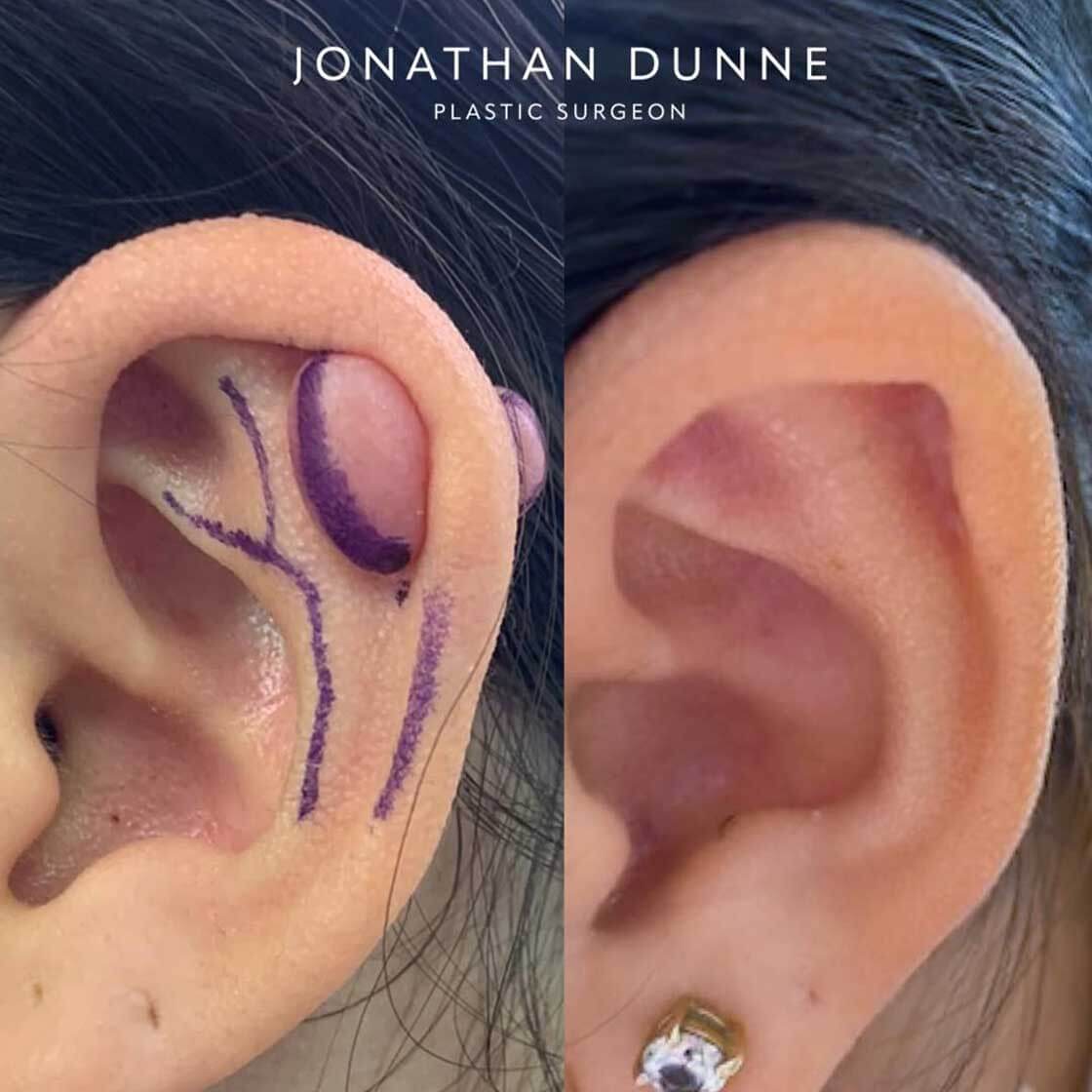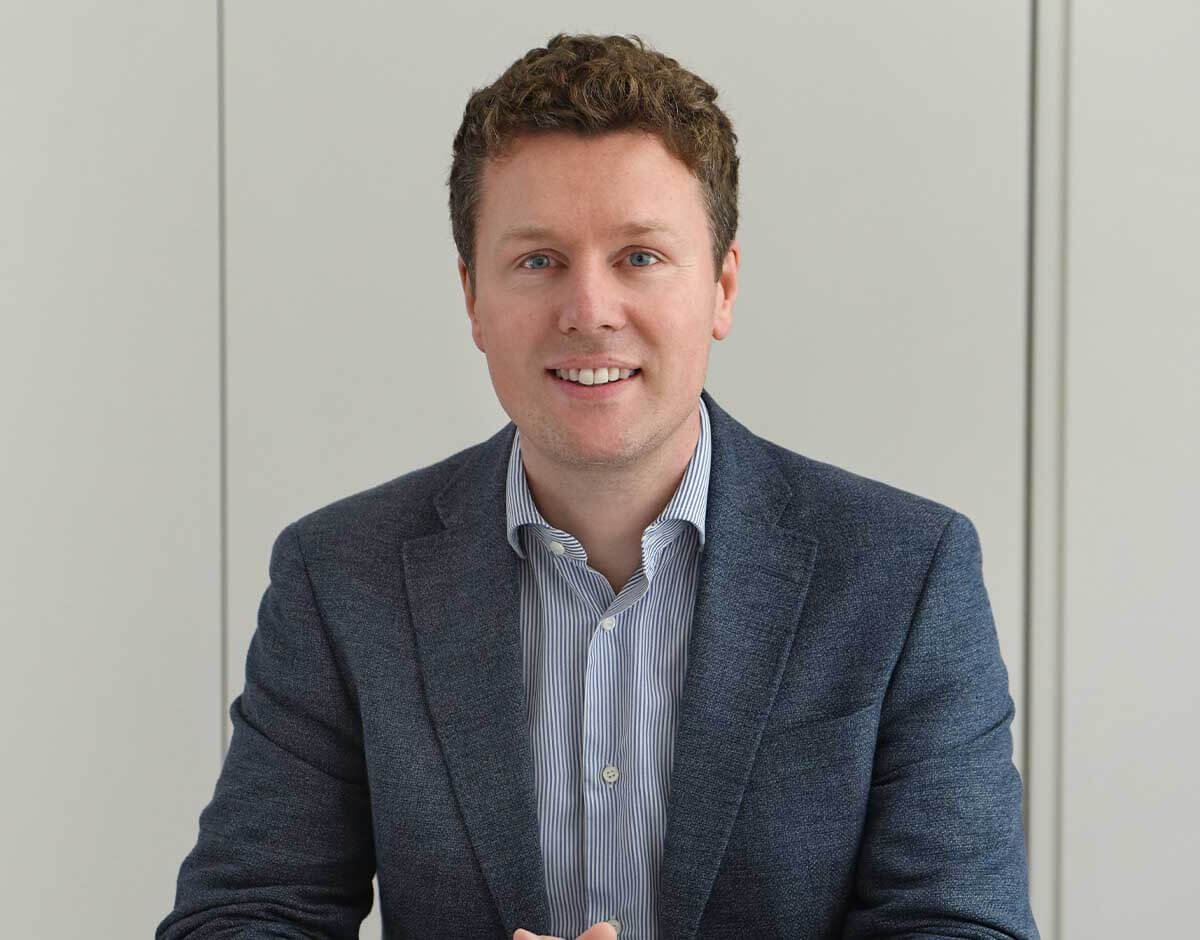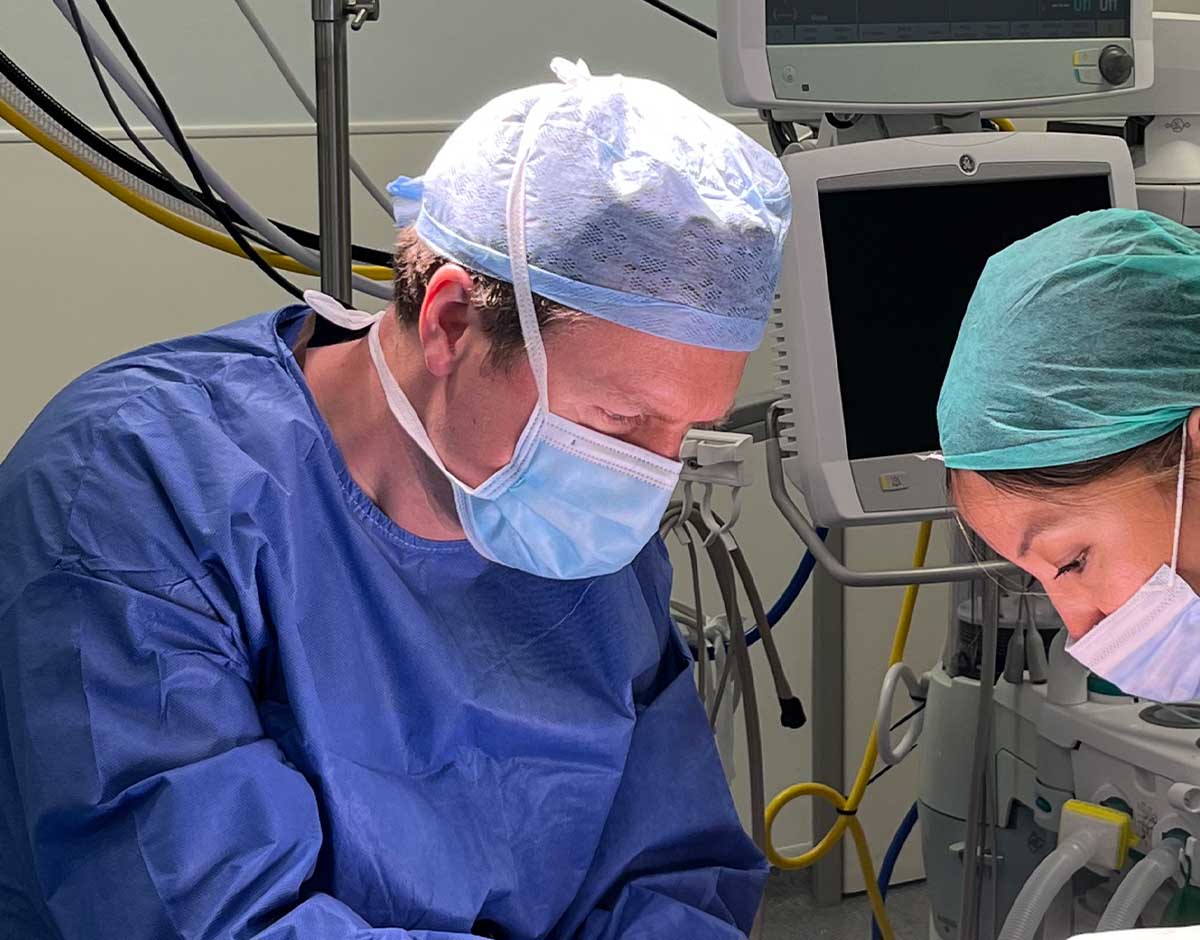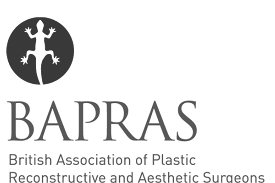-
What is ear keloid surgery?
Ear keloid surgery is a delicate procedure that demands meticulous attention to detail. This intricate operation involves carefully removing the scar that has formed as an overgrowth response to injury or trauma and reshaping the ear to restore a normal appearance. Jonathan employs precise techniques to excise the keloid whilst preserving or restoring the natural contours of the ear. The process requires a keen eye and steady hand to ensure optimal aesthetic results.
-
Can anyone with a lump on their ear have this surgery?
Ear keloid surgery is suitable for individuals with abnormal scar tissue growths on their ears. Your ear keloids will have been confirmed, and may be causing discomfort or aesthetic concerns. The surgery is most effective for keloid scars that haven’t responded to non-surgical treatments, but further details about your individual situation will be given following the initial consultation.
-
What happens during the first appointment for keloid scar removal from the ear?
Jonathan will examine your ear and the keloid scar in the first instance, discuss your medical history, and explain what your treatment options may be. You’ll have the opportunity to ask questions about the procedure, risks, and recovery. By the end of the consultation, you should have a clear understanding of the surgical plan and pre-operative instructions. If you decide to proceed, the next step will be scheduling your surgery date.
-
Is surgery for keloid scar removal from the ear painful?
Ear keloid surgery can involve moderate discomfort, but you should find that it’s manageable. Most patients experience some mild discomfort and tenderness for a few days post-operation, a pain that usually peaks within 24-48 hours and gradually subsides. Simple over the counter pain relief is usually sufficient.
-
How long does ear keloid surgery take?
Ear keloid surgery can take as little as 30 minutes, or up to 1 hour to complete, depending on the size, complexity and need for reconstruction of the ear. Smaller keloid scars may be removed more quickly, while larger or multiple keloids might require more time. In some cases, additional reshaping procedures can extend the surgery time.
-
What results can I expect from ear keloids surgery?
Generally, ear keloid surgery results include removal of the scar and improved ear shape with reduced discomfort. There may be a small scar, but this should fade over time. Most patients report high satisfaction with the aesthetic improvement.
-
Are there any risks associated with ear keloids surgery?
Potential complications include infection at the surgical site, a small amount of bleeding on the dressing and most importantly recurrence, with the chance the keloid may recur even larger than before. In uncommon cases, patients may experience changes in ear shape or sensation. The risks are small and they will be discussed in detail with you when you visit for your first consultation.

Ear Keloid Scars
Face Aesthetic
Keloid scars on the ear are formed from abnormal scar tissue. If you have keloids that have become large, painful, itchy or aesthetically problematic to you, surgery can remove them. These fibrous overgrowths often occur after ear piercings or injuries, and may continue to expand beyond the original wound site. Surgery is usually the go-to option when corticosteroid injections or pressure therapy has failed to control growth, however must always be combined with a course of steroid injections or next day radiotherapy to reduce the risk of recurrence. Jonathan Dunne is an experienced surgeon with many years of experience in removing ear keloids and reconstructing the ear to reform the normal shape and anatomy.
What happens during ear keloids surgery?
During ear keloid surgery Jonathan will aim to remove the excess scar tissue and re-shape the ear. He will carefully excise the keloid, taking care to preserve healthy surrounding skin. This removal is often combined with additional treatments to prevent recurrence such as steroid injections or next day radiotherapy. This multi-faceted approach aims to provide long-lasting results and improve the overall appearance of the affected area.
Why choose Jonathan Dunne to perform your ear keloid surgery?
Jonathan Dunne is a trusted surgeon, with years of specialised experience dedicated to the face and a gentle approach aimed at minimising discomfort and scarring, with innovative techniques reducing scarring and recovery times.
Faqs | Ear Keloid Scars
“I would certainly recommend Jonathan – he was so gentle and kind aswell as an amazing doctor. I was seen two days after contacting the when I had my biopsy. Five days after that, I had my procedure. Then several weeks of follow up checkups. The clinic was lovely, great location.”
Client Review











